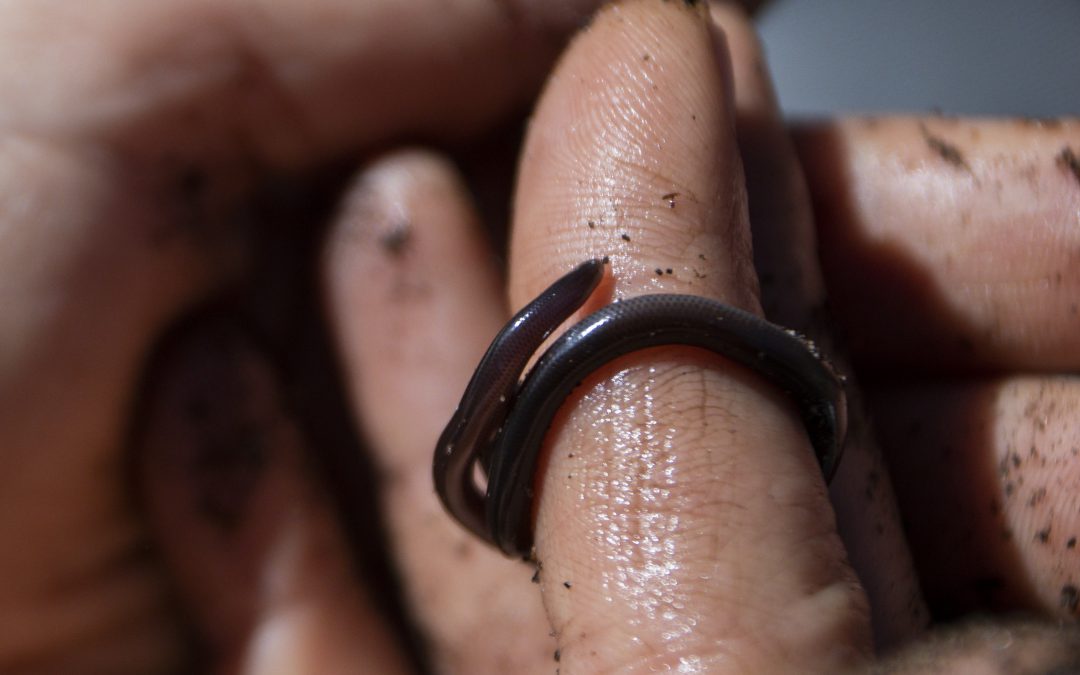
by Scott Jackson | May 26, 2022
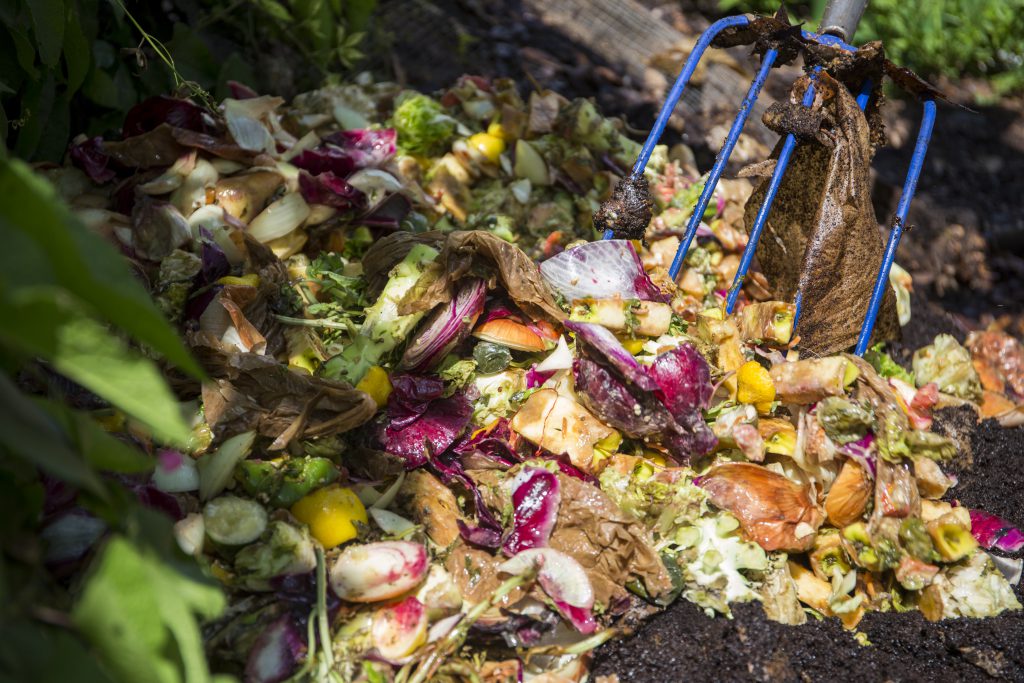
Nutrients found in food waste are too valuable to just toss away. Small scale composting and vermicomposting provide opportunity to recycle food waste even in limited spaces. UF/IFAS Photo by Camila Guillen.
During the summer season, my house is filled with family and friends visiting on vacation or just hanging out on the weekends. The kitchen is a popular place while waiting on the next outdoor adventure. I enjoy working together to cook meals, bbq, or just make a few snacks. Despite the increased numbers of visitors during this time, some food is leftover and ultimately tossed away as waste. Food waste occurs every day in our homes, restaurants, and grocery stores and not just this time of year.
The United States Food and Drug Administration estimates that 30 to 40 percent of our food supply is wasted each year. The United States Department of Agriculture cites food waste as the largest type of solid waste at our landfills. This is a complex problem representing many issues that require our attention to be corrected. Moving food to those in need is the largest challenge being addressed by multiple agencies, companies, and local community action groups. Learn more about the Food Waste Alliance at https://foodwastealliance.org
According to the program website, the Food Waste Alliance has three major goals to help address food waste:
Goal #1 REDUCE THE AMOUNT OF FOOD WASTE GENERATED. An estimated 25-40% of food grown, processed, and transported in the U.S. will never be consumed.
Goal #2 DONATE MORE SAFE, NUTRITIOUS FOOD TO PEOPLE IN NEED. Some generated food waste is safe to eat and can be donated to food banks and anti-hunger organizations, providing nutrition to those in need.
Goal #3 RECYCLE UNAVOIDABLE FOOD WASTE, DIVERTING IT FROM LANDFILLS. For food waste, a landfill is the end of the line; but when composted, it can be recycled into soil or energy.
All these priorities are equally important and necessary to completely address our country’s food waste issues. However, goal three is where I would like to give some tips and insight. Composting food waste holds the promise of supplying recycled nutrients that can be used to grow new crops of food or for enhancing growth of ornamental plants. Composting occurs at different scales ranging from a few pounds to tons. All types of composting whether big or small are meaningful in addressing food waste issues and providing value to homeowners and farmers. A specialized type of composting known as vermicomposting uses red wiggler worms to accelerate the breakdown of vegetable and fruit waste into valuable soil amendments and liquid fertilizer. These products can be safely used in home gardens and landscapes, and on house plants.
Composting meat or animal waste is not recommended for home composting operations as it can potentially introduce sources of food borne illness into the fertilizer and the plants where it is used. Vegetable and Fruit wastes are perfect for composting and do not have these problems.
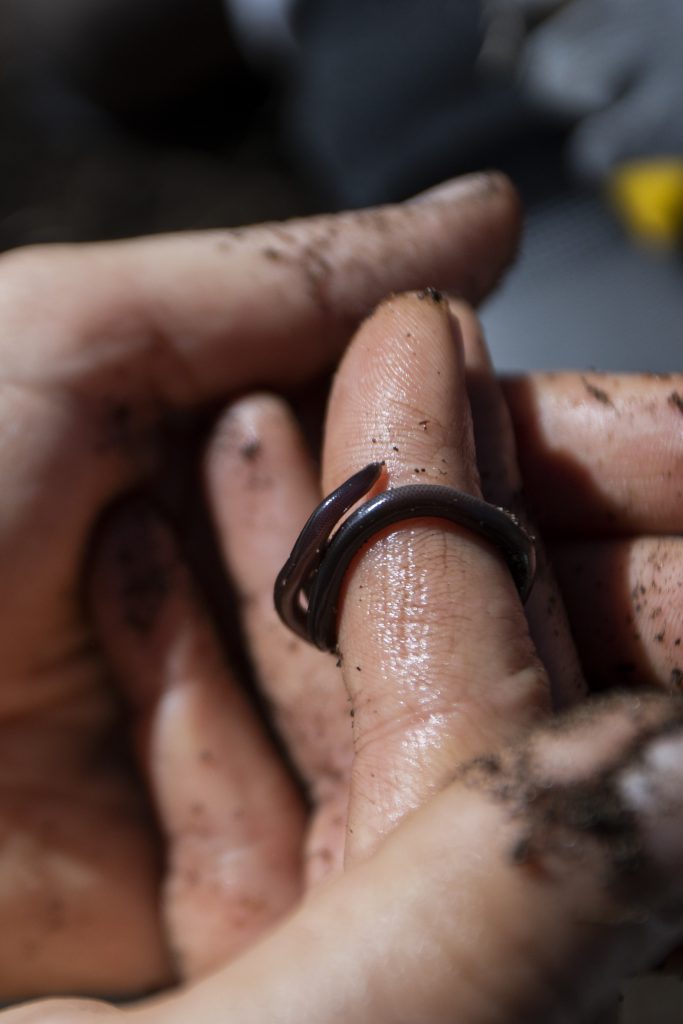
Composting worms help turn food waste into valuable fertilizer. UF/IFAS Photo by Tyler Jones
Detailed articles on how vermicomposting works are provided by Tia Silvasy, UF/IFAS Extension Orange County at https://blogs.ifas.ufl.edu/orangeco/2020/12/10/vermicomposting-using-worms-for-composting and https://sfyl.ifas.ufl.edu/media/sfylifasufledu/orange/hort-res/docs/pdf/021-Vermicomposting—Cheap-and-Easy-Worm-Bin.pdf Supplies are readily available and relatively inexpensive. Please see the above links for details.
A small vermicomposting system would include:
• Red Wiggler worms (local vendors or internet)
• Two Plastic Storage Bins (approximately 30” L x 20” W x 17” H) with pieces of brick or stone
• Shredded Paper (newspaper or other suitable material)
• Vegetable and Fruit Scraps
Red Wiggler worms specialize in breaking down food scraps unlike earthworms which process organic matter in soil. Getting the correct worms for vermicomposting is an important step. Red Wigglers can consume as much as their weight in one day! Beginning with a small scale of 1 to 2 pounds of worms is a great way to start. Sources and suppliers can be readily located on the internet.
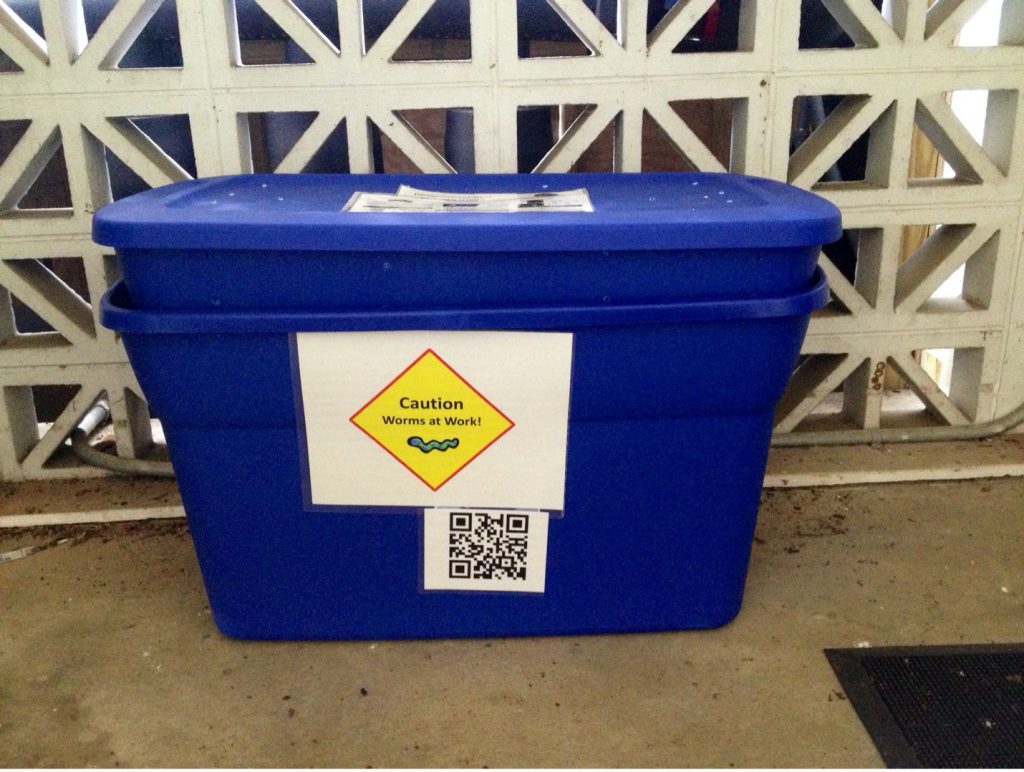
Worm “homes” can be constructed from two plastic storage bins with air holes drilled on the top. Additional holes put in the bottom of the inner bin to drain liquid nutrients. Pieces of stone or brick can be used to raise the inner bin slightly. Picture provided by UF/IFAS Extension Leon County, Molly Jameson
Once the worms and shredded paper media have been introduced into the bins, you are ready to process kitchen scraps and other plant-based leftovers. Food waste can be placed in the worm bins by moving along the bin in sections. Simply rotate the area where the next group of scraps are placed. See example diagram. For additional information or questions please contact our office at 850-784-6105.

Placing food scraps in a sequential order allows worms to find their new food easily. Contributed diagram by L. Scott Jackson
Portions of this article originally published in the Panama City News Herald
UF/IFAS is An Equal Opportunity Institution.
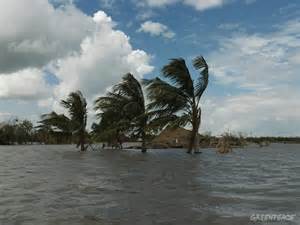
by Carrie Stevenson | Jul 6, 2018
Climate change. Those two simple words have the power to bring about a strong reaction in people. For many, the term is fraught with emotion—with worry, anger, and fear of the unknown. For others, these two words might elicit doubt or frustration. According to a multi-year, nationwide study conducted by George Mason and Yale Universities, as a country we react to the science of climate change along a spectrum of responses. On one end of the spectrum, people are “alarmed” (see a change in climate as a reality and taking action about it) and “concerned” (believe it is a serious issue but have not taken action). In the middle are those in different stages of understanding or awareness of climate issues, and characterized as “cautious”, “disengaged”, or “doubtful.” At the opposite end of the spectrum are the “dismissive”, which are that group of people who are actively opposed to action on climate change and may feel it is a conspiracy. These six categories were based on the responses of a large, in-depth survey conducted in 2008. Ten years later, researchers conducted the study again to see if attitudes had changed. Interestingly, they had—with the most noticeable shift out of the “disengaged” category, as people seemed to cast their lot with one side or the other.
| 2008/2009 |
Yale/George Mason Study Results |
2018 |
| 18% |
Alarmed (+3) |
21% |
| 33% |
Concerned (-3) |
30% |
| 19% |
Cautious (+2) |
21% |
| 12% |
Disengaged (-5) |
7% |
| 11% |
Doubtful (+1) |
12% |
| 7% |
Dismissive (+2) |
9% |
Table 1. 10-year comparison of “Global Warming’s Six Americas” Study. Source: http://climatecommunication.yale.edu/about/projects/global-warmings-six-americas/
Looking at the data, respondents left the “disengaged” group and moved either towards doubtful and dismissive or towards the cautious category. It is likely that the 3% change out of “concerned” moved directly into “alarmed”, as extreme weather events and record temperatures over the last 10 years brought the impacts of a changing climate closer to home.
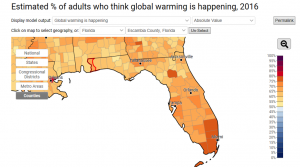
Data from a national study shows the level of agreement/disagreement on climate-based issues. Source: Yale/George Mason University
When the study is broken down by region, a minority of northwest Floridians believed human activities such as carbon emissions caused climate change. However ~65% of the same group believed climate change was happening (regardless of cause), and 80% responded that our country should fund research looking into renewable energy. The good news here is that while many of us do not agree on the cause of climate change, the majority of us agree on positive steps forward that may relieve some of its results.
For me, the take-home message of this study is that scientific understanding—on many issues, not just climate—is often along a spectrum based on exposure to research, personal interest/relevance, and cultural influences. When explaining any science-based concepts, it is important to know where your listener is coming from and start from there. It is unfortunate that we are in a time when many principles of science are taken as political positions and not products of unbiased scientific method. That being said, great thinkers from Galileo to Hawking have had their run-ins with popular opinion.
As the summer heat cooks on and hurricane season warms up, there will be more articles in the news about climate and its effects. When reading these, look at the source and their intent. Is this an opinion piece/blog with deeply emotional photos and stories meant to sway readers one way or the other? Or is it an agency page, reporting factual data? Time-tested agencies like the National Weather Service (NWS), National Oceanic and Atmospheric Administration (NOAA) and National Aeronautic and Space Administration (NASA) have been keeping historic records of climate data and satellite imagery of ice cover for decades. Use their information to inform yourself, no matter where you might fall upon the “six Americas” spectrum. Worldwide data for climate has been kept since 1880, and both NASA and NOAA climate data found:
- 2016 was the hottest year globally on record
- 2nd and 3rd hottest years on record were 2015 and 2014.
- 16 of the 17 warmest years documented since 1880 have been since 2001
For more information on climate science, check out these resources: Intergovernmental Panel on Climate Change, NOAA Climate, and NASA Climate.
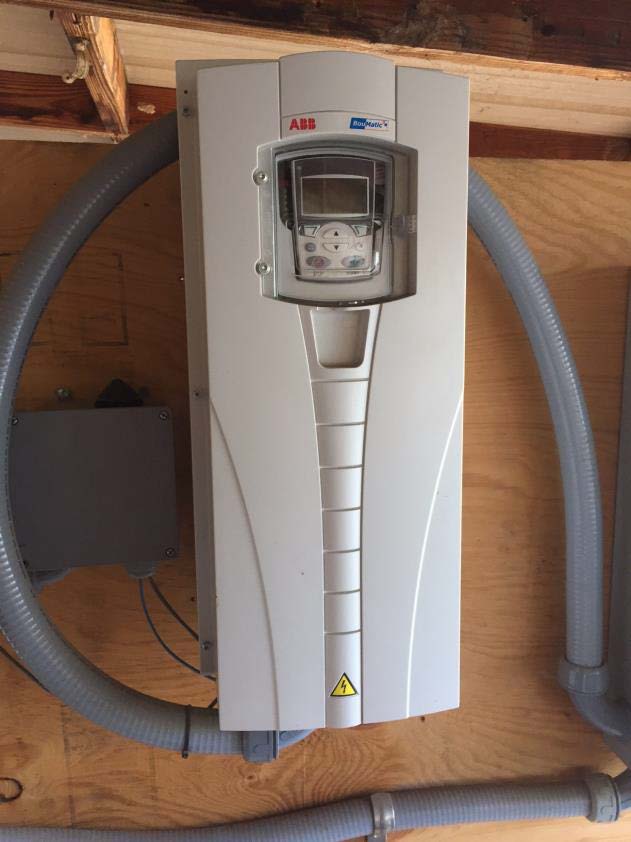
by Andrea Albertin | Jan 19, 2018
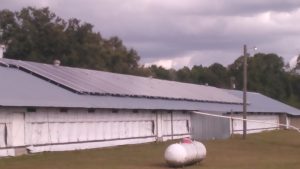
A poultry farm in North Florida used FDACS cost share funds to install solar panels for renewable energy production. Photo source: FDACS Office of Energy
Maximize your farm’s energy savings with FDACS’ free energy evaluations and cost share program
The Florida Department of Agriculture and Consumer Services (FDACS) Office of Energy is currently offering free energy evaluations and cost share funds to increase on-farm energy efficiency to agricultural producers in Florida. This includes all types of operations, such as row crop, fruit and vegetable farms, nurseries, livestock and poultry operations, dairies, and aquaculture farms.
What is an energy evaluation and how is it done?
The purpose of the free evaluations (which are valued at $4,500) is to let producers know how they can maximize energy efficiency and ultimately reduce costs on-farm. During these evaluations, members of a Mobile Energy Lab (MEL) walk through the operation with the producer, evaluating all forms of energy use. Since energy use is often linked to water use (irrigation pivots, for example), the team also assesses water use.
MEL teams are made up of energy experts contracted by FDACS from one of three universities: Florida A&M University, the University of Central Florida and the University of Florida. The MEL will be made up of members from the university closest to the farming operation being evaluated.
After the MEL team has finished the on-site visit, it prepares an evaluation and sends it to the producer. The evaluation details energy use and makes recommendations about how to increase efficiency on-farm. These recommendations depend on the operation and what the farmer is interested in doing. They can include switching to more efficient lighting, converting irrigation pumps from diesel to electric, using variable frequency drives (VFDs) on milk vacuum pumps in dairy operations and switching to or adding small-scale renewable energy generation, like solar or biomass, among others.
After a producer decides on changes she or he would like to make, FDACS offers 80% reimbursement (or cost-share) up to $25,000 to implement recommendations made in the evaluation.
An additional advantage of having a free energy evaluation completed by the MEL is that the evaluation can be used to apply for cost share funds from the USDA-Natural Resources Conservation Service (NRCS) Environmental Quality Incentives Program (EQIP). Producers could potentially receive cost share dollars from both FDACS and NRCS to increase on-farm energy efficiency.
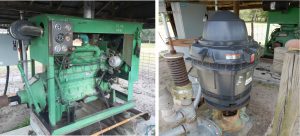
A producer in the Suwanee Valley took advantage of cost share funds to switch from using a diesel irrigation pump (left) to an electric pump (right). Photo source: FDACS Office of Energy
What is the timeframe for applying for energy evaluations and cost share funds?
FDACS offers statewide evaluations and cost share through their FRED Program (Farm Renewable and Efficiency Demonstration). These funds are set to expire September 2018, and so any items or equipment obtained with cost share funds must be purchased and installed by September 2018.
To have enough time to apply for and receive an energy evaluation (which is the first step to obtaining cost share funds), applications for evaluations must be turned in to FDACS by February 1, 2018.
The good news is that a similar program will continue after September. However, it will be in a more geographically restricted area. The Office of Energy received BP RESTORE funds to continue funding energy evaluations and cost share in the Apalachicola and Suwannee River Basins. These funds will be available starting this spring. The office hopes to secure more RESTORE funds in the future to expand the geographic reach of the program.
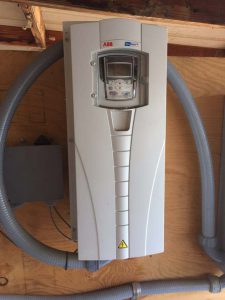
It’s estimated that dairy farms with 50 cows or more could save 40-55% of milk vacuum pump costs by using a variable frequency drive or variable speed drive (VFD) (shown above) on milk vacuum pumps. Photo source: FDACS Office of Energy
Who is eligible for energy evaluations and cost share funds?
Producers that are eligible for NRCS EQIP funds are eligible for this energy program. As stated by FDACS, this means a producer has to:
- Have control of the land for the term of the proposed contract period.
- Be in compliance with the highly erodible land and wetland conservation provisions described in 7 CFR (Code of Federal Regulations) Part 12.
- Have an interest in the agricultural operation as defined in 7 CFR Part 1400.
- The average adjusted gross income of the individual, joint operation or legal entity, may not exceed $900,000
If you have any questions about these requirements, please contact Takara Waller at the Office of Energy (contact information listed below).
How do you apply for an energy evaluation?
To apply for an energy evaluation, you need to submit an application to the FDACS Office of Energy. Application forms and instructions on how to submit them, as well as more information about the program can be found at http://www.freshfromflorida.com/Business-Services/Energy/Incentives-for-Agriculture-Producers
If you have any questions, Takara Waller from the Office of Energy can help guide you through the process. Her contact information is:
(850) 617-7470 (phone)
(850) 617- 7471 (fax)
Takara.Waller@FreshFromFlorida.com
For more information about NRCS EQIP cost share funds, contact your local NRCS office. Contact information for offices in the panhandle region can be found at https://www.nrcs.usda.gov/wps/portal/nrcs/detail/fl/contact/local/?cid=nrcs141p2_015022
Your local USDA Farm Services Agency can also provide more information about cost share programs related to energy. Contact information by county is found by selecting (or clicking on) the county of interest on the following map https://offices.sc.egov.usda.gov/locator/app?service=page/CountyMap&state=FL&stateName=Florida&stateCode=12.
Remember: an energy evaluation is the first step in obtaining cost share funds to increase on-farm energy efficiency and savings.
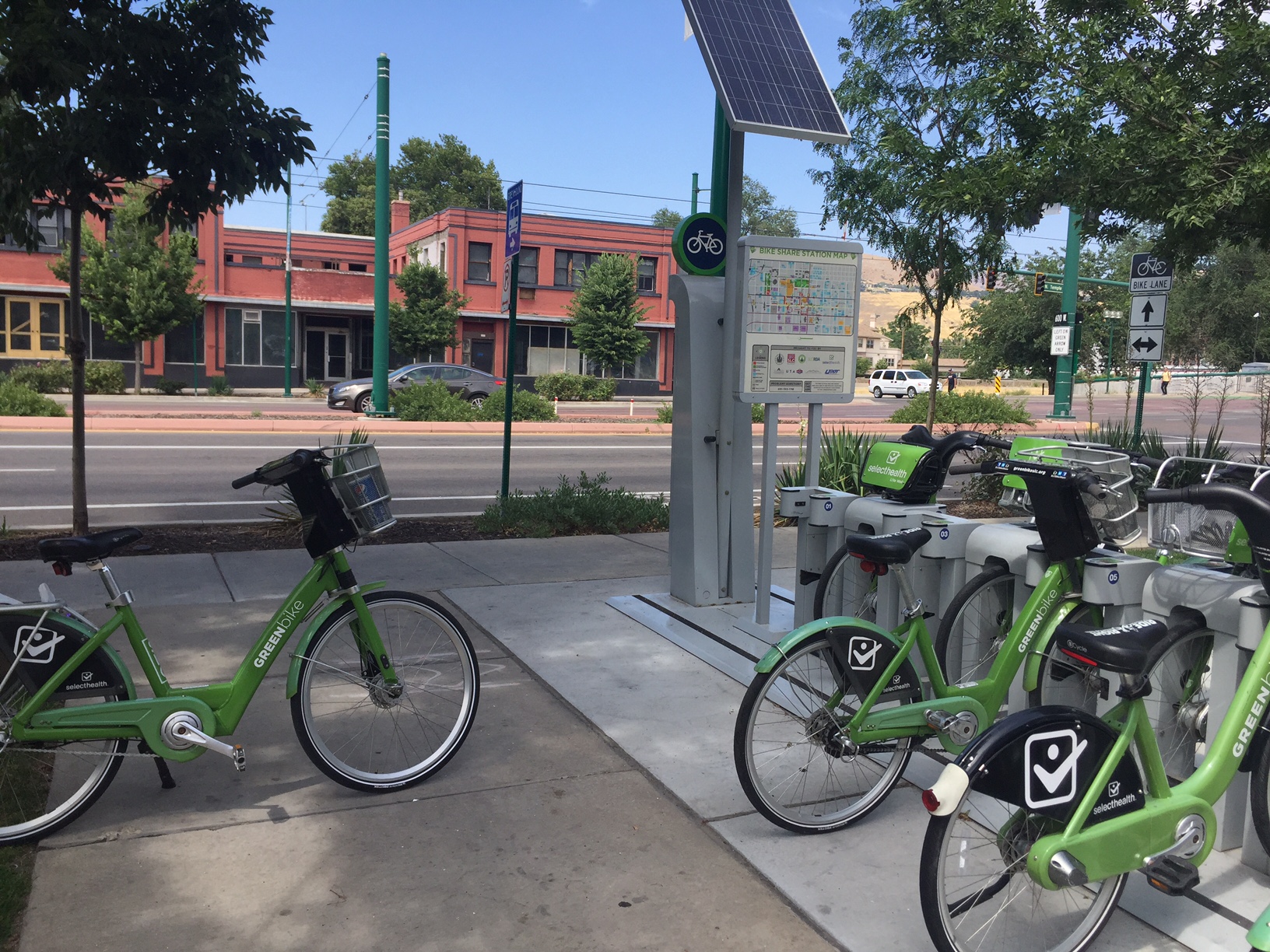
by Carrie Stevenson | Jul 14, 2017
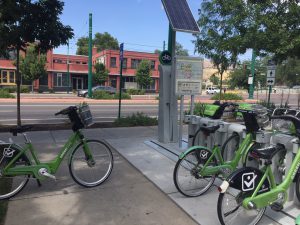
This solar-powered bicycle rental facility provides a healthy alternative to driving around a large city. Photo credit: Carrie Stevenson, UF IFAS Extension
Climate change is one of those topics that most people don’t want to think much about. It can be overwhelming, it can be controversial, and it can be downright frightening. A year ago, Yale and George Mason University completed the most recent surveys in the “Six Americas” study, which determined levels of belief and concern in global warming. The “Six Americas” range from people who are alarmed, concerned, cautious, disengaged, doubtful, or dismissive when asked about climate change. Interestingly enough, 34% of Americans consider themselves concerned while 23% were cautious. Ranking third were 11% who are doubtful about climate change.
When you start to drill down into the individual questions asked on the survey, you see more agreement. For example, when Escambia County citizens were asked whether global warming is caused by human activities, somewhere between 45%-50% said yes. However, when asked whether they think global warming is actually happening (regardless of cause), the percentage went up to 65%-70%. When asked if they support funding research into renewable energy sources, Escambia County residents jumped up to an 80%-85% agreement. That, to me, is nothing short of a miracle, having lived in Escambia County long enough to know there’s rarely that much agreement on anything!
The takeaway message from that survey, to me, is that regardless of where people stand on climate change/global warming, there are some starting points that can be common ground. If the majority of a community believe climate change is happening and that supporting renewable energy research is a good thing, then they can work towards those outcomes to the mutual benefit of all.
An example of one small but significant step towards sustainable energy use includes bicycle share/rental facilities. On a recent trip to Salt Lake City, solar-powered bike stations were strategically placed around the downtown area. For a small fee, the bicycles could be checked out (for 30 minutes at a time) up to 24 hours. This ensures there are plenty of bicycles available for other users, and stations are close enough to one another that it’s easy to check bikes in and out if you need more time. The benefits of encouraging bicycles are numerous; reduced traffic and burning of fossil fuels, reduced need for parking in high-value real estate, and health benefits for riders. The other investment necessary to make biking more prevalent and successful are bike lanes, which were plentiful in Salt Lake City to keep riders and drivers safe. Once safe bike lanes are in place, those who live in the area with their own bikes are more likely to use them on a regular basis, further decreasing vehicular traffic.
There are many great organizations and publications around the country dedicated to increasing bicycle use and safety. For more information, check out Trail Link, Momentum Magazine, or the Burlington Bikeway.
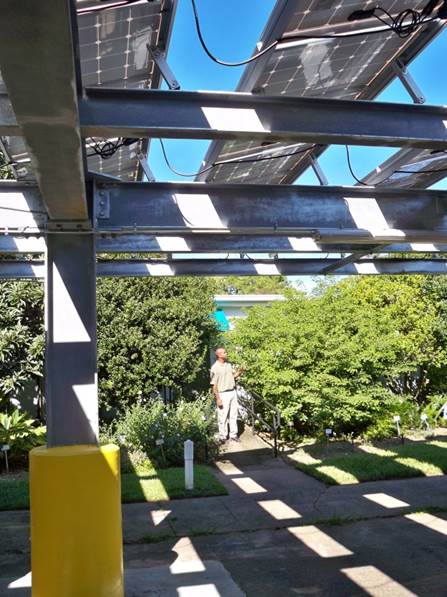
by Will Sheftall | Feb 4, 2017
I know you’ve seen the rear window decals that announce in stick figures just who could be riding in that SUV – mom, dad, kids of various sizes, and sometimes pets. A clever Florida variation uses big and little flip-flops and paw prints to paint the same picture.
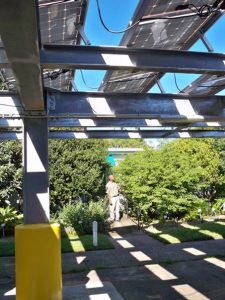
Shade pattern under Leon Extension Solar PV array
Photo: Will Sheftall
Flip-flops on the beach = footprints in the sand = carbon footprints on the Earth – at least, that’s how my mind processes this voluntary family accounting, posted for all to see. I wonder if I’m the only driver out there who studies a family’s flip-flop line-up at the stop light, and ponders our human family’s footprint on Earth’s climate and other natural resources.
My mind can imagine the line-up of flop-flops as belonging just to me. The two big pairs (representing mom and dad on the rear glass) evoke the four big lifestyle footprints I leave on this Earth. My lifestyle footprints are made by what I eat and how it was produced, the way I commute and travel, the buildings in which I live and work, and by what I wear and how it was made. Lifestyle footprints left on Earth’s resources are the water and energy I consume directly and indirectly, plus greenhouse gas emissions and wastes with my name on them.
Wouldn’t it be great if we could shrink the size and impact of one of those pairs of big flip-flops with an integrated solution, a twofer – reducing two of our lifestyle footprints by linking them together? There is an opportunity to do just that by combining solar PV (solar photovoltaics, better known as solar panels) with EVs (electric vehicles), to achieve an integrated reduction in the energy and carbon footprints of the two together. This opportunity is available to families for home application, and to agencies/ businesses for work application. It’s particularly exciting to envision the prospect of reducing commercial/ institutional CO2 footprints by combining net-metered solar PV on zero-net office buildings and warehouses, with EV’s for business errands and local deliveries.
Here’s some insight into how this might work. The office building in which I work is an award-winning, energy-exporting “Sustainable Demonstration Center” for Leon County government. It’s the UF IFAS Extension Center in Leon County, on Paul Russell Road. Constructed in 1961 and retrofitted with solar PV and geothermal HVAC in 2012, it was certified in 2014 by the New Buildings Institute as the third commercial/ institutional “zero-net energy” building in Florida. It has a grid-tied, net-metered system.
In the 4¾ years since our facility’s solar PV and geothermal energy systems went on-line in March 2012, thermostats in this County government building have been managed to obtain even greater energy conservation than was envisioned when planning the retrofit. As a result, our facility has exported a continually growing net surplus of energy to the City of Tallahassee Utilities grid – over and above covering its own energy needs. The amount of surplus energy donated since just August 2014 stands at 24,400 kWh.
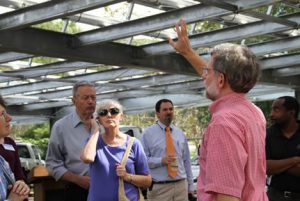
Visitors learn about the solar PV system from Extension Agent Will Sheftall.
Photo: Kendra Zamojski
To put this amount of energy into context, let’s consider what mechanical work 24,400 kWh of electrical energy can do. Here’s where the other half of the twofer opportunity comes in. On an accessible battery charge of 10.5 kWh, an extended range electric vehicle (EV) such as the Chevrolet Volt goes a summer/ winter average of 40 miles on stored battery power alone. 24,400 kWh would provide the equivalent of 2324 EV charges at 10.5 kWh per charge. That’s enough stored battery power for 92,960 electric miles!
Forget about this surplus from the past for a moment. Let’s compute the repeating annual surplus of clean solar energy produced by our PV array, and apply that to the opportunity for integrating building and travel footprints at Leon Extension. If we compute that our solar PV system has produced – over the past 2.3 years – an annual energy surplus equivalent to 997 EV charges per year, and if we project that Extension Agents could utilize County vehicles to travel 40 miles every work day for 245 work days/year, then we find there would be enough surplus energy produced every year to fully charge a fleet of four EVs at 10.5 kWh per charge/day, for use on the job every single work day.
This is exciting stuff! With more auto manufacturers offering new EV models with longer ranges and lower prices – and with extension through 2019 of the 30% federal tax credit for residential solar and the 30% federal Business Energy Investment Tax Credit (ITC) for business solar, the future of PV + EV looks bright. Perhaps this rosy outlook will encourage government offices and businesses around town to shrink those two big flip-flops down in size with a twofer, and ‘Leave a Lower Carbon Footprint Trace’ on the Earth.
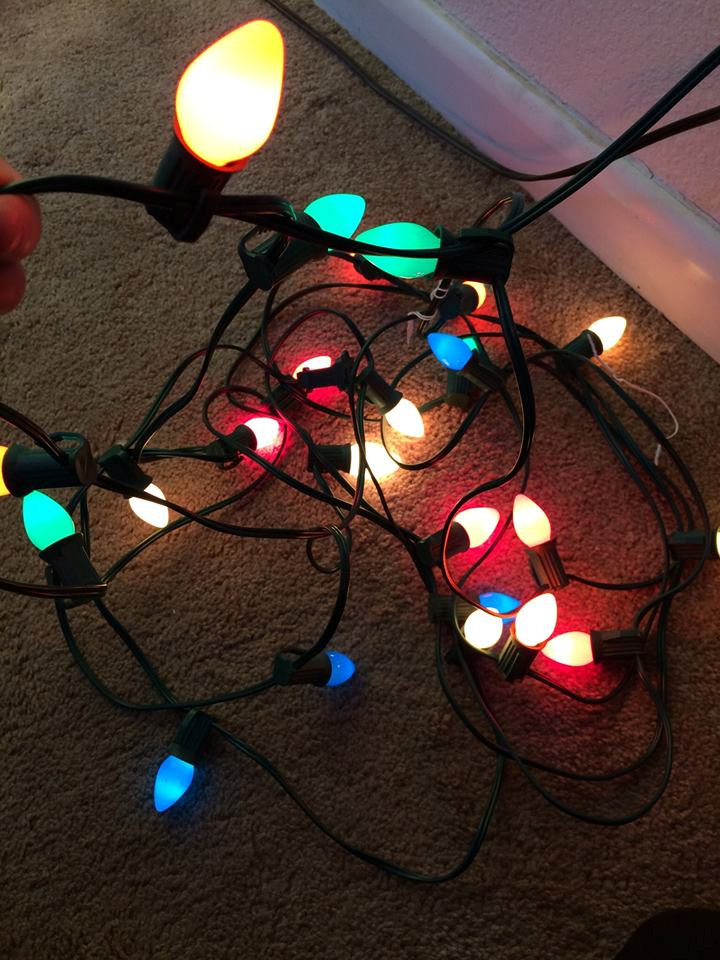
by Carrie Stevenson | Dec 5, 2016
I don’t know about you, but my kids have a lot of “stuff.” Legos on my son’s floor, stuffed animals surrounding my daughter’s room—it’s a lot to keep up with. Granted, they have never thrown away a Lego brick or stuffed animal, so they’re not contributing to the landfill (only my lack of sanity), and they have used these gifts for many years. When they outgrow them, we will donate their toys to another family or thrift shop. However, as a group, we Americans generate 25% more waste during the holidays (between Thanksgiving and New Year’s), the equivalent of about 1 million extra tons of garbage.

Music lessons are a gift that keeps on giving–and can result in a skill lasting a lifetime. Photo credit: Eric Stevenson
As I, and my children, have gotten older, it’s been more important to me to give the gift of experiences, or at least something that they can use for a long time. Tickets to a concert or sports event, music lessons, or a trip to someplace new will result in lifelong memories and skills without the packaging waste or clutter in the house.
Passing on an antique piece of jewelry or their grandfather’s tool set can be inexpensive for you but priceless for the recipient. Last year my kids’ great-aunt gifted them with honeybees for a family from Heifer International, and it was an amazing opportunity to discuss selfless giving and the needs of others. Many folks would love to receive a donation in their name to their favorite charity as a gift.
When it comes down to it, though, giving tangible gifts is often expected, wanted, or even needed. So how can we do this without contributing to 2017’s landfill? First, look at packaging. Many companies are trying to consciously reduce the amount of plastic, paper, and space used to ship and package their items. If you do get lots of extra packaging, be sure to recycle it. I’m a huge believer in reusable gift bags—I’ve been passing some back and forth to family members for years—and some gifts can be given in a useful container, such as a wooden bowl, a platter, or reusable cloth bags. Other gift ideas include clothing (I got a shirt last year made from recycled water bottles) and toys made from recycled materials. Plants, whether houseplants or a tree for the yard, make for long-lasting, beautiful gifts, and consumables like homemade food are meaningful and inexpensive.
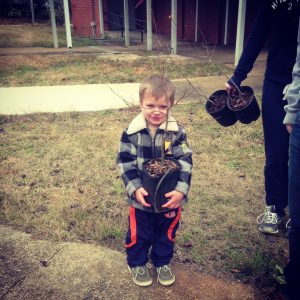
Consider giving plants as gifts–they are long-lasting and have many societal and environmental benefits. Photo credit: Carrie Stevenson
Finally, consider the companies producing the gifts you give. Forbes’ list of the 50 Most Sustainable Companies highlights corporations that are making a concerted effort to reduce energy and water use. This can make a big difference when you consider the worldwide reach and influence of companies like Adidas (#5) or Coca-Cola (#13).
We at UF IFAS Extension wish you all a wonderful, memorable, and safe holiday season. This time of year can be overwhelming, though, so if you need help managing stress, check out this publication from our Family, Youth, and Consumer Sciences department!



















